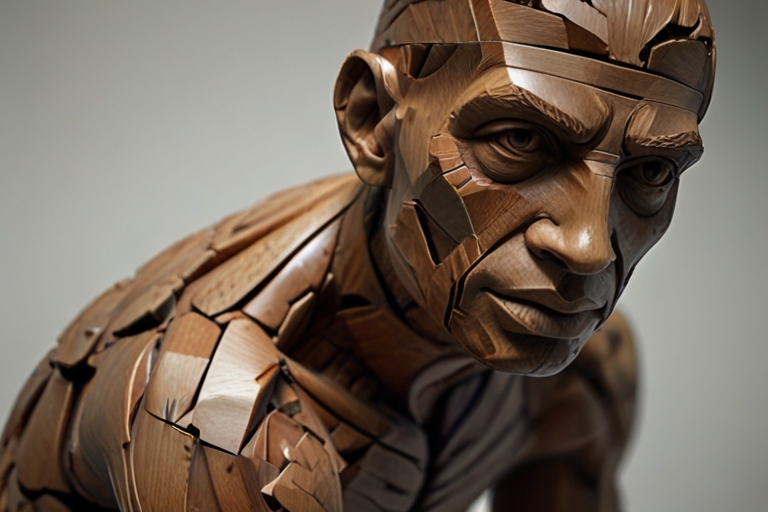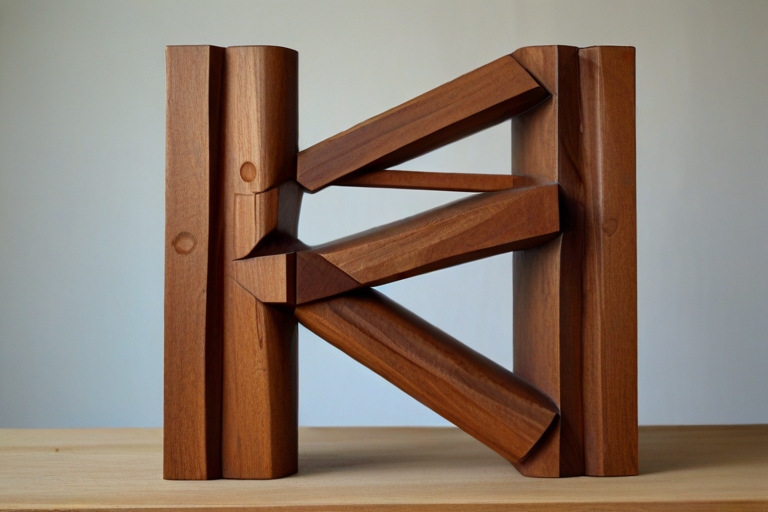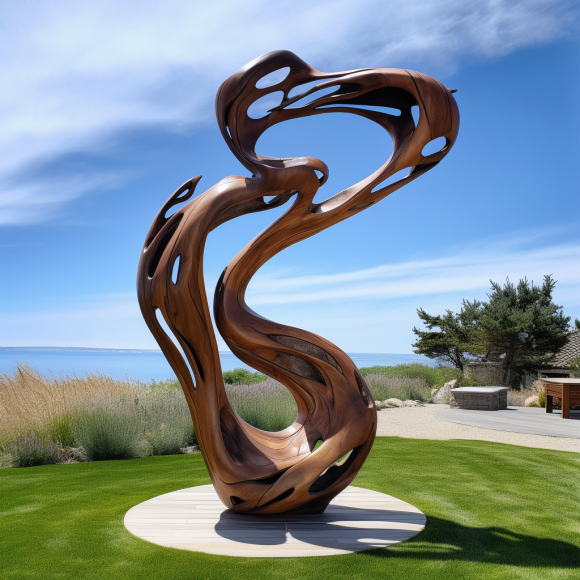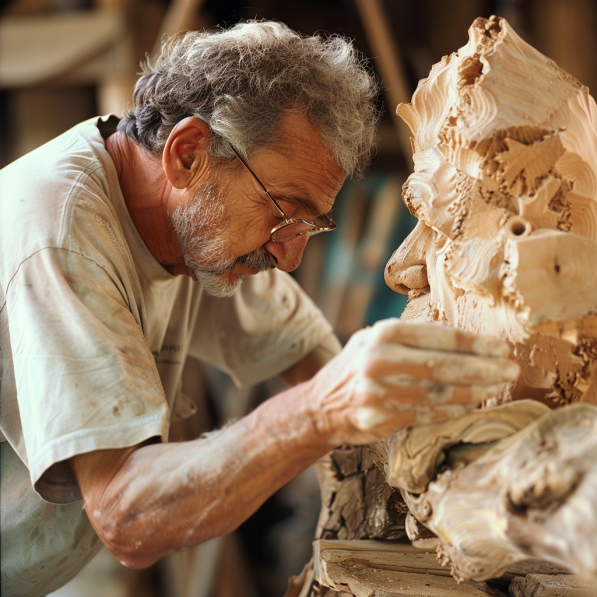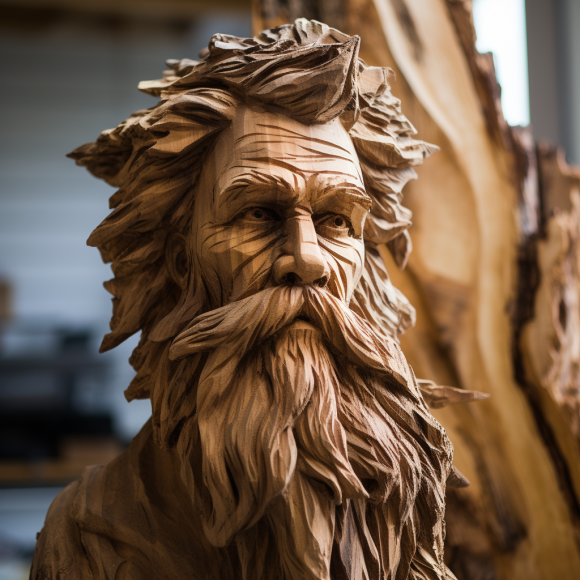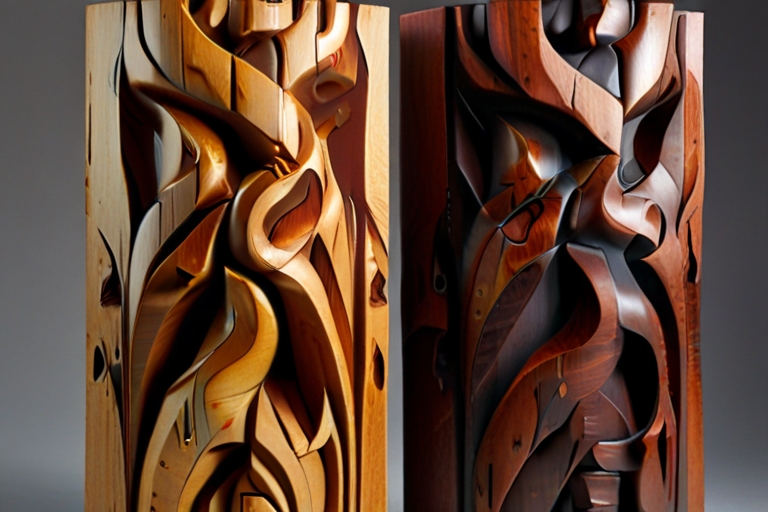The Role of Wood Grain in Sculpture: Texture and Visual Appeal
In the world of sculpture, wood grain is more than just a surface texture—it’s a dynamic element that adds depth, character, and visual intrigue to artistic creations. This article delves into the multifaceted role of wood grain in sculpture, exploring its tactile qualities, aesthetic impact, and the ways in which artists harness its natural beauty to evoke emotion and engage the senses.
- Tactile Sensation: The tactile sensation of wood grain is a sensory delight that invites viewers to engage with sculptures on a physical level. Whether running fingers along smooth, polished surfaces or tracing the contours of rough-hewn textures, the tactile experience of wood grain stimulates the senses and fosters a deeper connection between viewer and artwork. From the silky smoothness of sanded hardwood to the rugged ridges of weathered timber, each variation in texture tells a story of the wood’s history and character.
- Visual Dynamics: Wood grain is a visual feast for the eyes, offering a rich tapestry of patterns, colors, and organic forms that captivate and inspire. From intricate swirls and knots to subtle gradations of light and shadow, the visual dynamics of wood grain add depth and dimension to sculptures, infusing them with a sense of vitality and movement. Artists leverage these inherent qualities to create compositions that play with light, texture, and perspective, drawing viewers into immersive worlds of sculptural wonder.
- Emotional Resonance: Beyond its aesthetic appeal, wood grain carries emotional resonance that speaks to the human experience on a profound level. The warmth and organic nature of wood evoke feelings of comfort, nostalgia, and connection to the natural world. Whether through the weathered patina of aged timber or the pristine perfection of freshly cut lumber, wood grain resonates with viewers on an emotional level, inviting reflection, contemplation, and a sense of belonging.
- Expressive Potential: Wood grain serves as a versatile medium for artistic expression, offering endless possibilities for experimentation and innovation. Artists manipulate the direction, depth, and density of grain patterns to create visual interest, emphasize form, and convey mood. Whether carving, sculpting, or assembling, the expressive potential of wood grain allows artists to breathe life into their creations, infusing them with personality, narrative, and a sense of authenticity that resonates with viewers.
In sculpture, wood grain is more than just a surface—it’s a vital element that shapes the aesthetic, tactile, and emotional qualities of artistic creations. From its tactile sensation to its visual dynamics and expressive potential, wood grain enriches sculptures with a depth and complexity that captivates and inspires. As we marvel at the beauty of wood grain in sculpture, let us celebrate its role as a timeless medium for artistic expression and a testament to the enduring power of nature’s beauty.
Call to Action: Next time you encounter a wood sculpture, take a moment to appreciate the intricate patterns, textures, and colors of the wood grain. Run your fingers along its surface, allowing yourself to be swept away by the tactile sensation and visual allure. And if you’re feeling inspired, why not try your hand at wood carving or sculpting? Embrace the expressive potential of wood grain as you unleash your creativity and bring your artistic vision to life in sculptural form.

